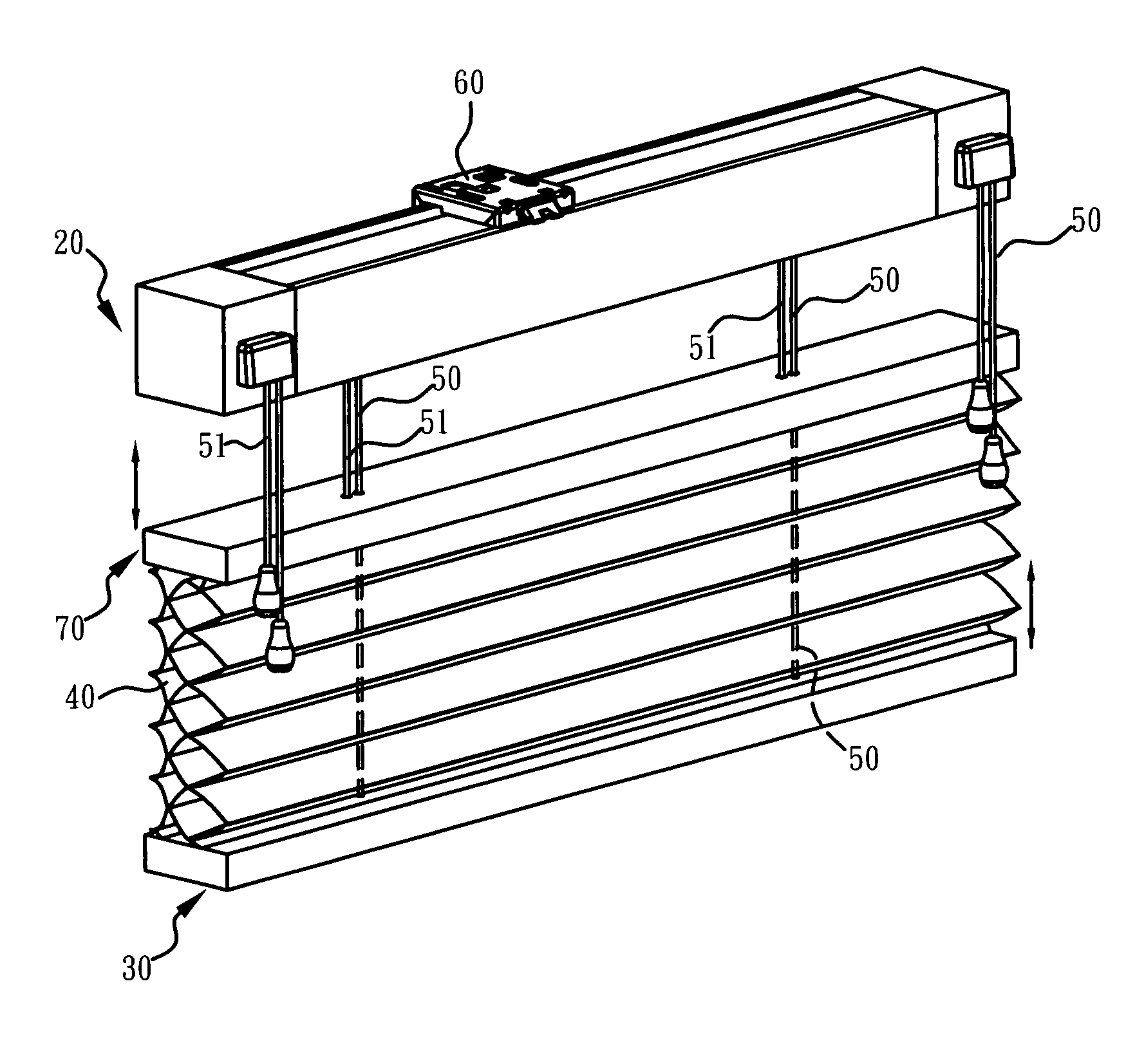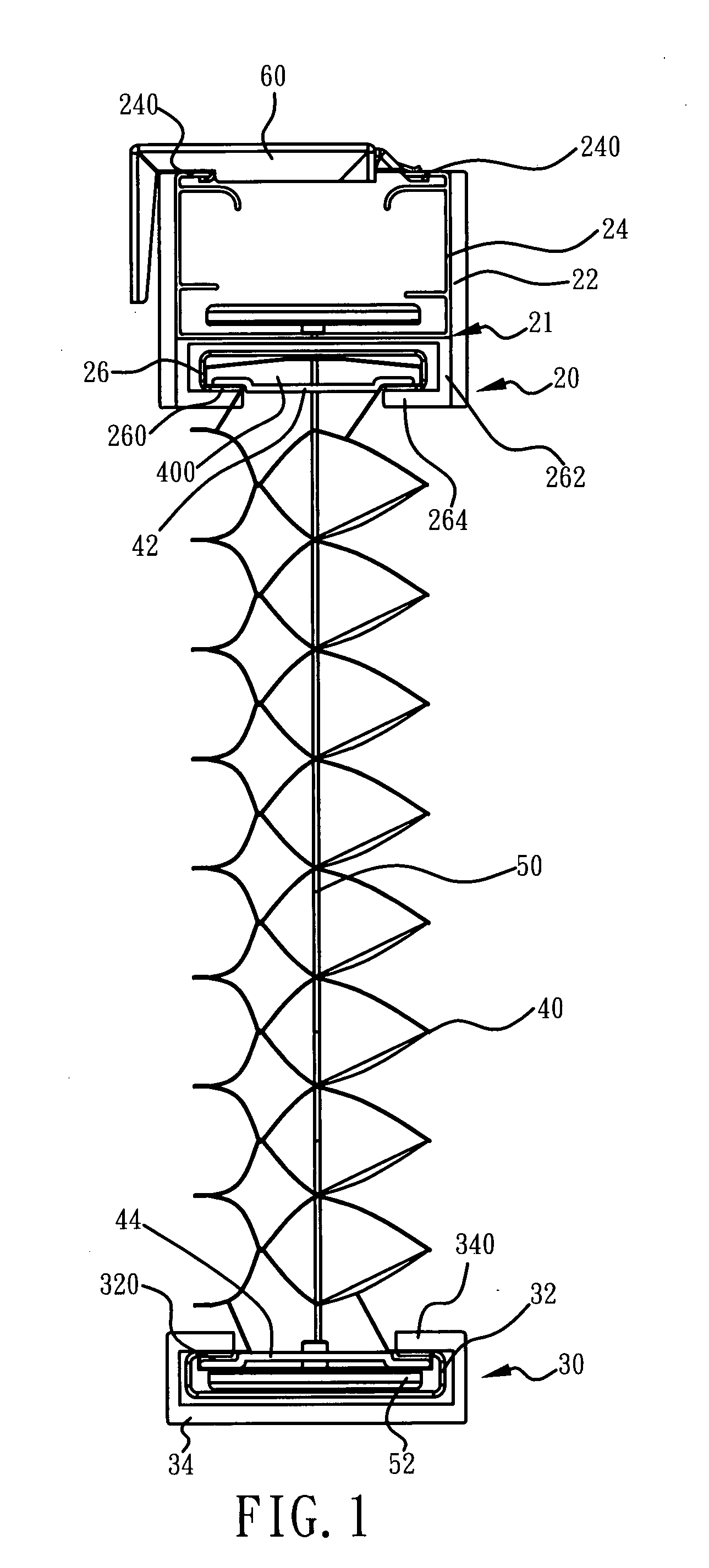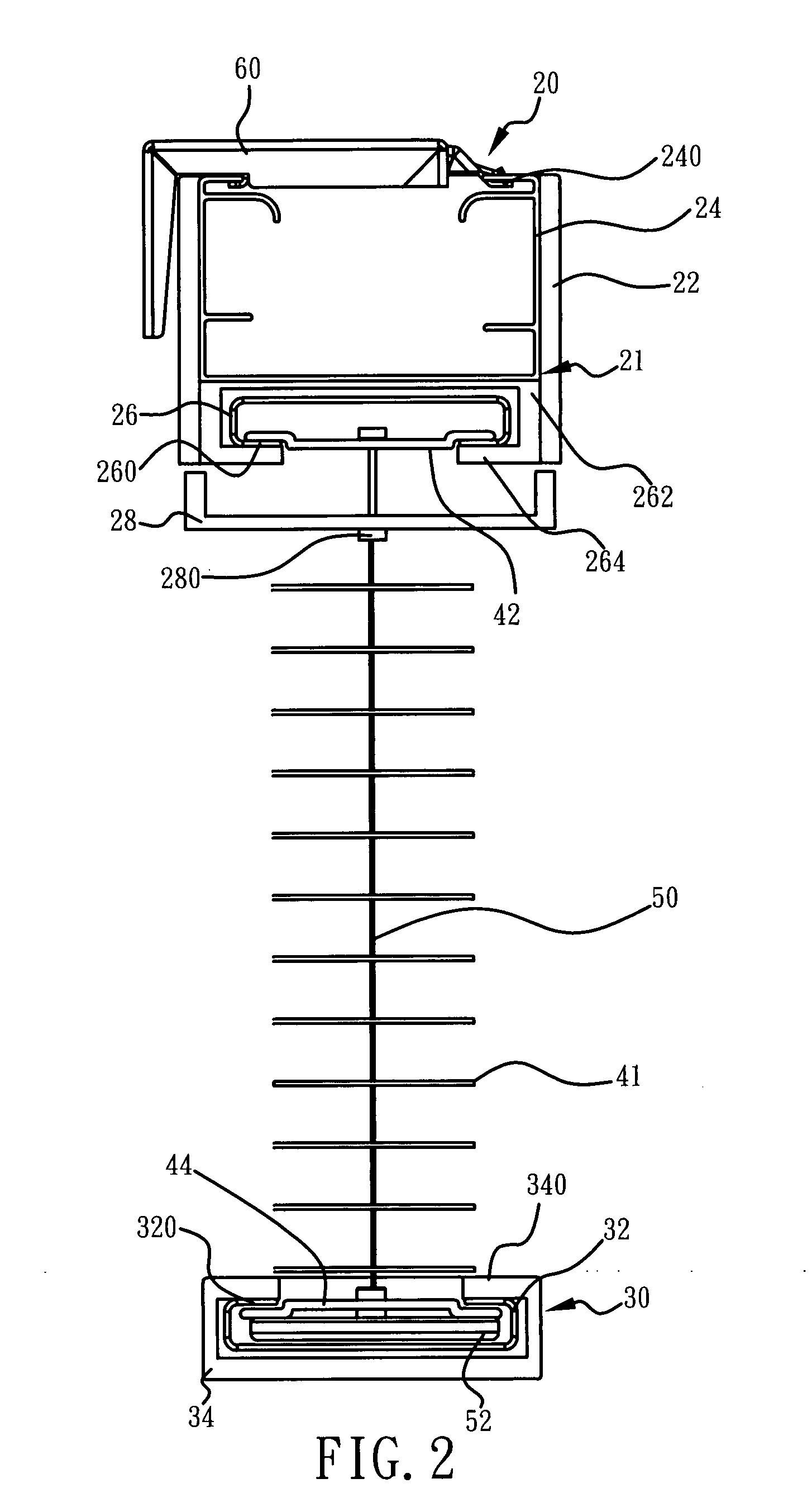Rail structure for window blinds
a technology for railings and window blinds, applied in door/window protective devices, construction, building components, etc., can solve the problems of gap between the valance and the headrail, inability to have an attractive appearance, and high total cost of manufacturing second and third arrangements, so as to enhance the overall aesthetic appearance of window blinds
- Summary
- Abstract
- Description
- Claims
- Application Information
AI Technical Summary
Benefits of technology
Problems solved by technology
Method used
Image
Examples
first embodiment
[0024]As shown in FIG. 1, it is a schematic structural view of the present invention. Cellular shades are taken as examples in this embodiment. The rail structure comprises a headrail 20, a bottomrail 30, and a cellular shade 40. The bottomrail is disposed below the headrail 20, and the cellular shade 40 is disposed between the headrail 20 and the bottomrail 30. In addition, a plurality of pulling cords 50 are connected to between the headrail 20 and the bottomrail 30 and substantially passing through the entire cellular shade 40, so as to control the upward and downward movement of the bottomrail 30 and thusly fix the position of the bottomrail 30 thereon.
[0025]The headrail 20 comprises a body 21 composed of a first supporting member 24 and a second supporting member 26, and a pair of connecting members 22 respectively mounted to a front surface and a back surface of the body 21.
[0026]The first supporting member 24 is disposed on an upper portion of the headrail 20 and has an upwar...
fourth embodiment
[0037]Referring to FIG. 5, it is a structure of a headrail of the present invention. The headrail 80 comprises a body 81 and a pair of connecting members 82. The boy has an H-shaped similarity, and a pair of first flanges 810 and a pair of second flanges 812 are inwardly extending into a predetermined width from respective top and bottom ends of two associated sides of the body 81. Still, the pair of connecting members 82 is respectively connected to front and rear surfaces of the body 81.
[0038]Besides, each bottommost end of the connecting member 82 has a fourth flange 820, and each fourth flange 820 is extending along the longitudinal orientation of the connecting member 82. Also, each fourth flange 820 has a predetermined width, so as to be fully concealed under the second flange 812; therefore, the body 81 made of metal materials would not be exposed.
[0039]Consequently, the supporting members (24, 26, 32, and 72) and the body 81, that are made of metal materials, can bear the ov...
PUM
 Login to View More
Login to View More Abstract
Description
Claims
Application Information
 Login to View More
Login to View More - R&D
- Intellectual Property
- Life Sciences
- Materials
- Tech Scout
- Unparalleled Data Quality
- Higher Quality Content
- 60% Fewer Hallucinations
Browse by: Latest US Patents, China's latest patents, Technical Efficacy Thesaurus, Application Domain, Technology Topic, Popular Technical Reports.
© 2025 PatSnap. All rights reserved.Legal|Privacy policy|Modern Slavery Act Transparency Statement|Sitemap|About US| Contact US: help@patsnap.com



